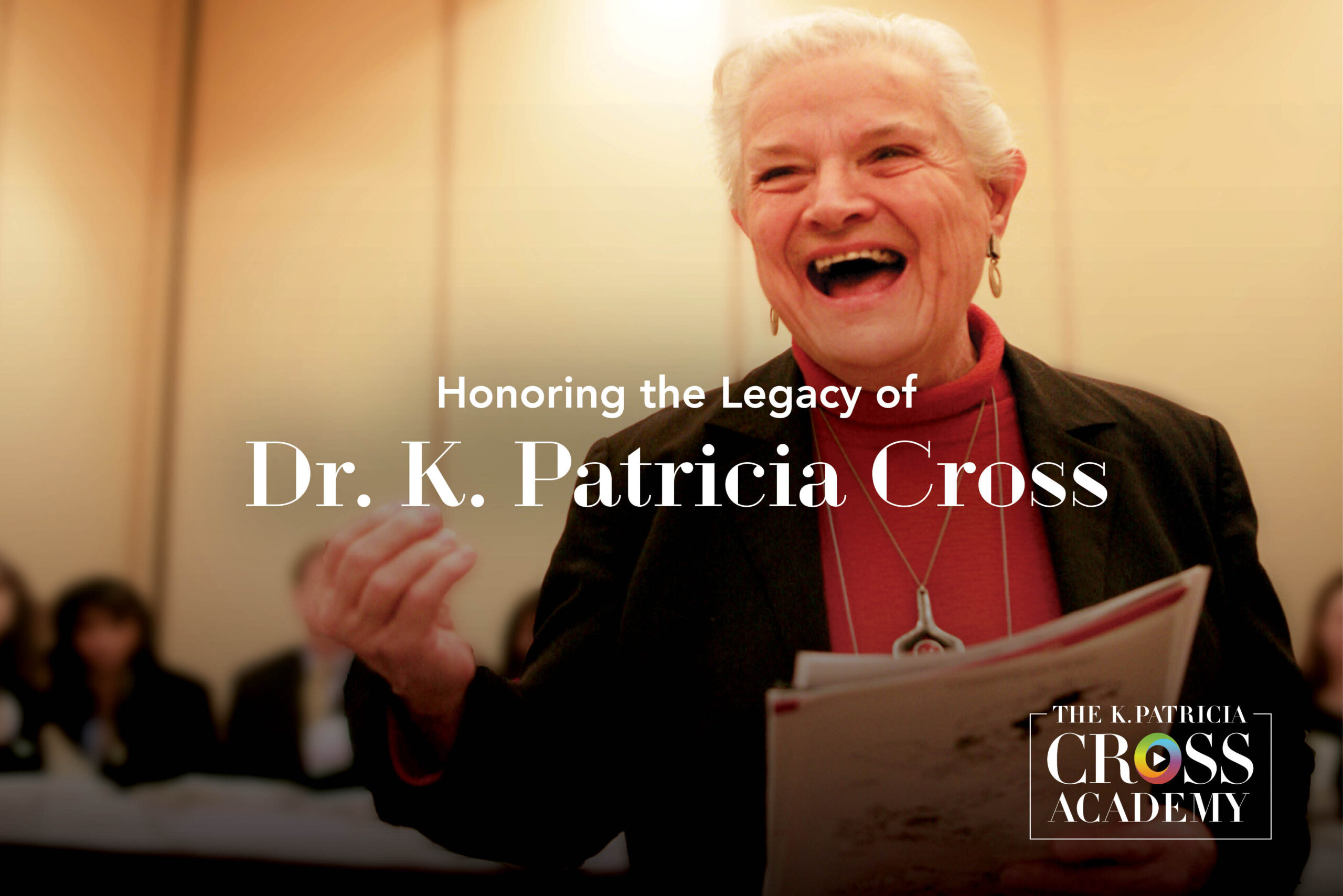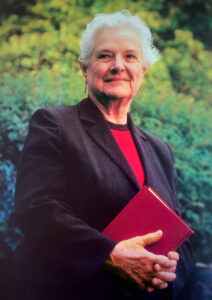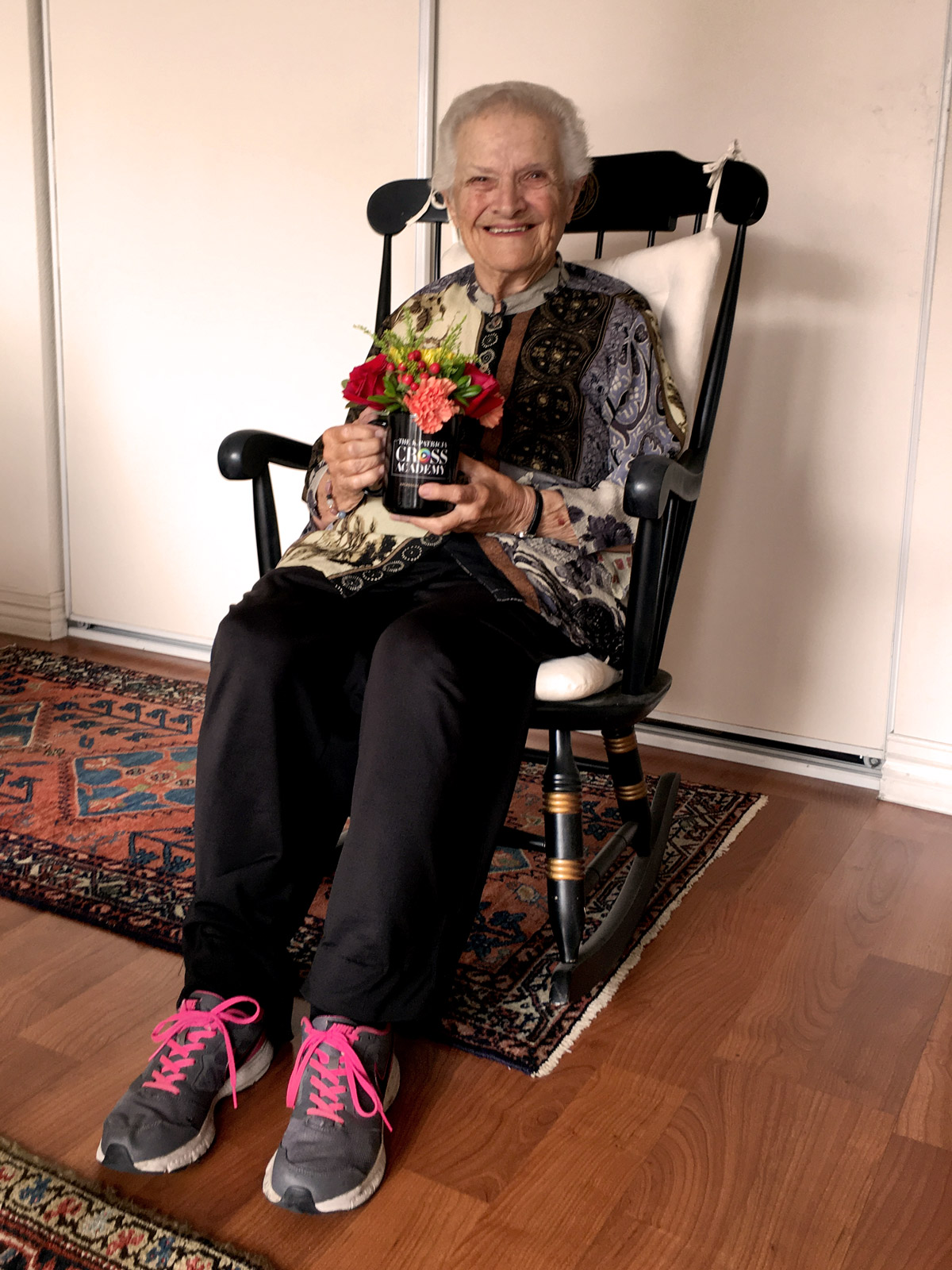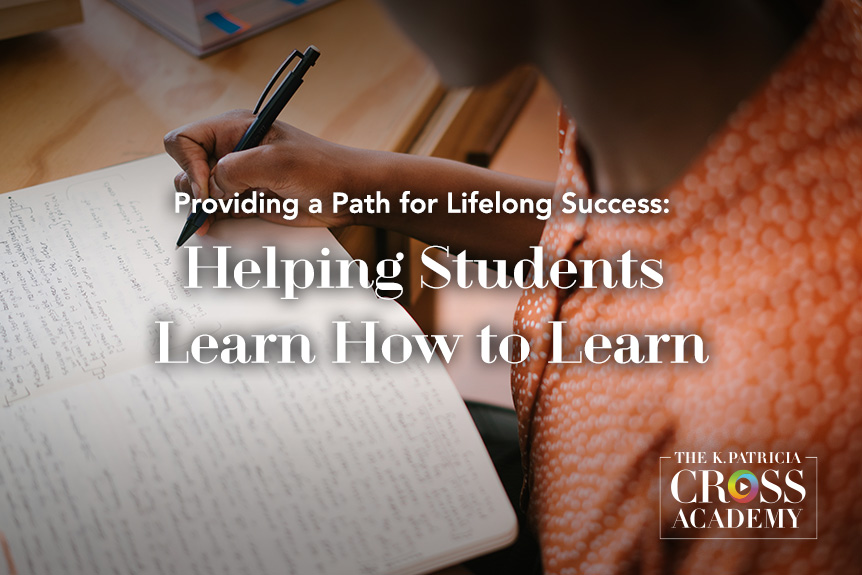
In a world that seems to be experiencing increased strife and suffering, we need role models who can inspire and uplift us. This academy’s namesake is such a role model. K. Patricia Cross, affectionately known as Pat to her friends and colleagues, passed away earlier this year after living a life of dignity, substance, and service. Because November is a designated time for national reflection and gratitude, we have selected this month to center our attention on Pat’s extraordinary legacy.
Pat was born on St. Patrick’s Day in 1926 in the college town of Normal, Illinois, and named in St. Patrick’s honor. Her parents instilled in her a love for knowledge and learning that would become the cornerstone of her lifelong dedication to education. This commitment supported a journey that spanned decades and left an indelible mark on the academic landscape.
While Pat’s journey was illustrious, it was not without challenges. Most noticeably, the love of her life was struck down by illness probably stemming from unprotected exposure to radium during his research as a graduate student in the early years of nuclear physics.

This loss was a turning point in Pat’s life. Compelled to forge a path of her own, she began by leaving her hometown in 1960 and accepting the position of Dean of Students at Cornell University. Her career continued as she assumed the role of a distinguished research scientist at the Educational Testing Service. It was there that she honed her skills in educational research and began to develop her visionary approach to higher education. Throughout the 1970s she shared this vision through multiple publications and speeches.
Then in 1980, Pat accepted a position at the Harvard Graduate School. It was a time of intense reexamination of education due to the revelation that there were gaps, (sometimes considerable ones) between what teachers thought they had taught and what students actually learned. Pat was early to recognize the need to close this gap and to argue that institutions assess and provide evidence of student learning.
But while the assessment movement was largely responding to external demands for accountability, Pat emphasized assessment’s power to advance the quality of instruction. She thought assessment should be teacher designed and teacher driven and urged instructors to ask questions about teaching and learning and to seek answers to them:
“If college teachers were to practice their profession at a more sophisticated level, they would discover that the classroom is, or should be, a challenging research laboratory, with questions to be pursued, data to be collected, analyses to be made, and improvement to be tried and evaluated.” (Cross, 1986, p. 3)
Pat was able to put her ideas into action with support from several organizations, ultimately establishing the Classroom Research Project at Harvard in 1988. She then moved herself and the project to the University of California, Berkeley, where she assumed the UCB David Pierpont Gardner Endowed Chair, teaching as a professor of higher education until her retirement in 1995.

Perhaps Pat’s best-known contribution to higher education came out of the Classroom Research Project: the “Classroom Assessment Technique.” A “Classroom Assessment Technique” is an organized structure that guides teachers throughout the process and procedures to conduct formative assessment in their classrooms. It is an efficient tool to bridge theory and practice. She and Tom Angelo first published Classroom Assessment Techniques in the late 1980s, which popularized the technique structure.
Pat hoped the teaching technique format could be applied to other aspects of instruction. In 2003, she worked with Elizabeth F. Barkley and Claire H. Major to create similarly structured techniques to guide teachers on how to implement collaborative learning in their classrooms (Barkley, Major, & Cross, 2004, 2014). Elizabeth and Claire continued to further Pat’s concept of the “teaching technique” through the publication of multiple books (Barkley & Major, 2016, 2018, 2020). Indeed, their techniques are the source of the teaching technique videos and downloadable templates that are offered through the K. Patricia Cross Academy.
While Pat’s work with assessment solidified her status as a pioneer in the field of higher education, she went on to address a range of issues that emerged in academia in the ensuing years. Her work is reflected in eight books, more than two hundred articles, monographs, and chapters, and the 250+ speeches she made beginning in the 1960s and ending in 2001 (https://diva.sfsu.edu/collections/kpcross).
 Elizabeth and Claire are grateful that Pat introduced them to each other, an act that led to a professional partnership that has lasted two decades. They are also thankful to have counted Pat as a friend and mentor. Elizabeth and Claire in turn founded the K. Patricia Cross Academy to honor the influence she has had on them and to carry on her legacy.
Elizabeth and Claire are grateful that Pat introduced them to each other, an act that led to a professional partnership that has lasted two decades. They are also thankful to have counted Pat as a friend and mentor. Elizabeth and Claire in turn founded the K. Patricia Cross Academy to honor the influence she has had on them and to carry on her legacy.
The K. Patricia Cross Academy carries forward the torch of Pat’s visionary ideas and unwavering commitment to higher education excellence. With its focus on innovation and the constant pursuit of the betterment of education, the Academy serves as a living testament to Pat’s enduring legacy. It also continues to nurture the next generation of thought leaders, ensuring that Pat’s profound impact on higher education extends far into the future.
The life of K. Patricia Cross is a reminder that one person’s dedication and passion can have a transformative effect on the world. Her powerful legacy, grounded in scholarship that focuses on the reform of both policy and practice, must be preserved and celebrated. Her groundbreaking insights and contributions continue to influence higher education. We can remember her for her intellectual brilliance and also be deeply grateful for her generosity, her determination, and her profound influence on the lives of countless students and scholars.
Note
The K. Patricia Cross Academy is a nonprofit professional development website (kpcrossacademy.org) that provides free, accessible, and substantive resources for college teachers. It is supported by donations from the founders, by proceeds generated from Engaged Teaching: A Handbook for College Faculty (Barkley & Major, 2022), and by Pat’s generous bequest to the East Bay Community Foundation (https://www.ebcf.org).
References
Angelo, T. A., & Cross, K. P. (1998). Learning assessment techniques: A handbook for college faculty (2nd ed). Wiley/Jossey-Bass.
Barkley, E. F., Major, C. H., & Cross, K. P. (2004, 2014). Collaborative learning techniques: A handbook for college faculty (2nd ed). Wiley/Jossey-Bass
Barkley, E. F., & Major, C. H. (2016). Learning assessment techniques: A handbook for college faculty. Wiley/Jossey-Bass.
Barkley, E. F., & Major, C. H (2018). Interactive Lecturing: A handbook for college faculty (2nd ed). Wiley/Jossey-Bass
Barkley, E. F., Major, C. H. (2020). Student engagement techniques: A handbook for college faculty (2nd ed). Wiley/Jossey-Bass
Cross, K. P. (1986) A proposal to improve teaching or what “taking teaching seriously” should mean. https://files.eric.ed.gov/fulltext/ED274257.pdf (Accessed 10.29.23)
Cross, K. P., & Angelo, T.A. (1988). Classroom assessment techniques: A handbook for faculty. Ann Arbor: National University of Michigan.
Suggested Citation
Barkley, E. F., & Major, C. H. (n.d.). . CrossCurrents. https://kpcrossacademy.org/honoring-the-legacy-of-dr-k-patricia-cross/

Engaged Teaching
A Handbook for College Faculty
Available now, Engaged Teaching: A Handbook for College Faculty provides college faculty with a dynamic model of what it means to be an engaged teacher and offers practical strategies and techniques for putting the model into practice.





